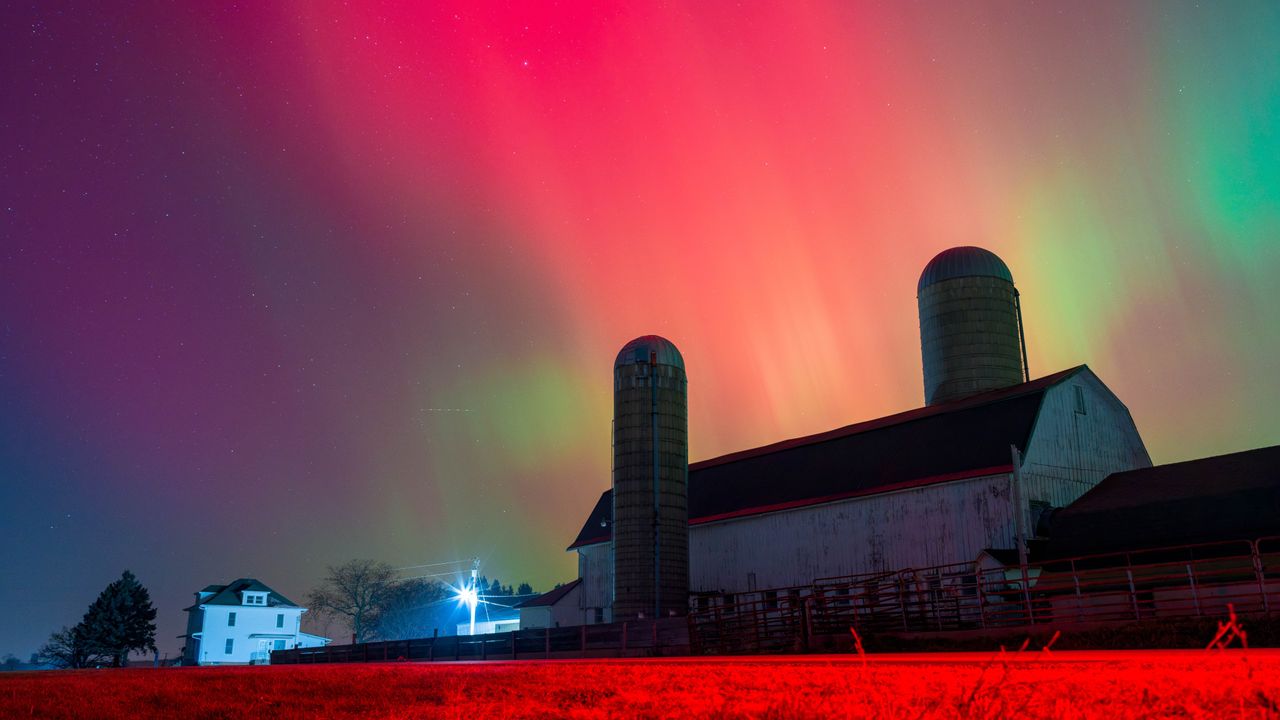
Editor's note: This article was updated on Nov. 12 at 11 a.m. after two of the three incoming CMEs hit Earth overnight.
The combined solar outbursts triggered a severe G4 geomagnetic storm, resulting in auroras appearing as far south as Arizona, Mexico, Texas, and Florida.
Conditions have since subsided to G3 (strong) levels, but NOAA predicts that G4 conditions could return tonight following the arrival of the third and strongest CME, which is expected to hit Earth sometime today. Elevated auroral activity is likely to carry over into Thursday (Nov. 13) and Friday (Nov. 14), according to the latest NOAA update.
Three powerful outbursts of solar plasma are barrelling toward Earth, with dazzling auroras possible across the northern half of the United States over the coming nights.
Minor auroral activity is possible at high latitudes tonight (Nov. 11), but Wednesday (Nov. 12) could bring the Northern Lights as far south as northern California and Alabama, according to an alert from the National Oceanic and Atmospheric Administration (NOAA). There could also be a strong showing of auroras on Thursday (Nov. 13), NOAA added, though that forecast may change as more data comes in over the coming days.
The three solar outbursts headed our way — known as coronal mass ejections (CMEs) — were all launched from a particularly active sunspot called AR4274, which is currently aimed toward Earth. The first two CMEs erupted on Nov. 9 and Nov. 10, respectively, and were each triggered by powerful X-class solar flares — the most powerful class of solar flare on NOAA's space weather prediction scale.
These flares were categorized as class X1.7 and X1.2, and the resulting CMEs have a chance to combine with or "cannibalize" each other as they speed toward Earth, according to Live Science's sister site Space.com. These first two CMEs are expected to hit sometime tonight.
The third, and most powerful CME, was launched on Tuesday morning following the eruption of a gargantuan X5.1 solar flare — almost five times the intensity of the two preceding flares, and the single strongest solar flare of 2025 so far. The powerful flare triggered radio blackouts over Europe and Africa shortly after it erupted, according to Space.com.

'Severe' storms possible
The monster CME accompanying this flare is predicted to hit Earth sometime on Wednesday (Nov. 12), according to NOAA. Combined with the effects of the two prior outbursts, this could cause serious disturbances to Earth's magnetic field. NOAA predicts the resulting geomagnetic storm could reach "severe" G4 levels — the second highest level on the agency's scale.
Besides plunging the Northern Lights to much lower latitudes than usual, G4-class geomagnetic storms can cause power grid fluctuations, low-frequency radio disturbances, and GPS errors, according to NOAA.
There is nothing that an average person needs to do to prepare for a geomagnetic storm. However, if you wish to go aurora hunting over the coming nights, find a dark sky location as far from artificial lights as possible and allow about 20 minutes for your eyes to adjust. You don't need any special equipment to see the aurora, but the colors can sometimes look even more vibrant through a digital camera or phone screen, as they have a large aperture to let in light.
Solar flares, CMEs, and geomagnetic storms all become more common — and more intense — during solar maximum, the peak of the sun's roughly 11-year activity cycle. Astronomers suspect we are seeing the current solar cycle's maximum play out right now, though the peak of activity may have already occurred last year.







